The guardians of Choa Chu Kang Cemetery
SINGAPORE — Sitting under a tree with a rusting bike — filled with his trusty grass cutter, a two-litre bottle, cans of paint and a harmonica — Mr Mamat Rasidi recounted how he “built his own business” at the Choa Chu Kang Muslim cemetery.
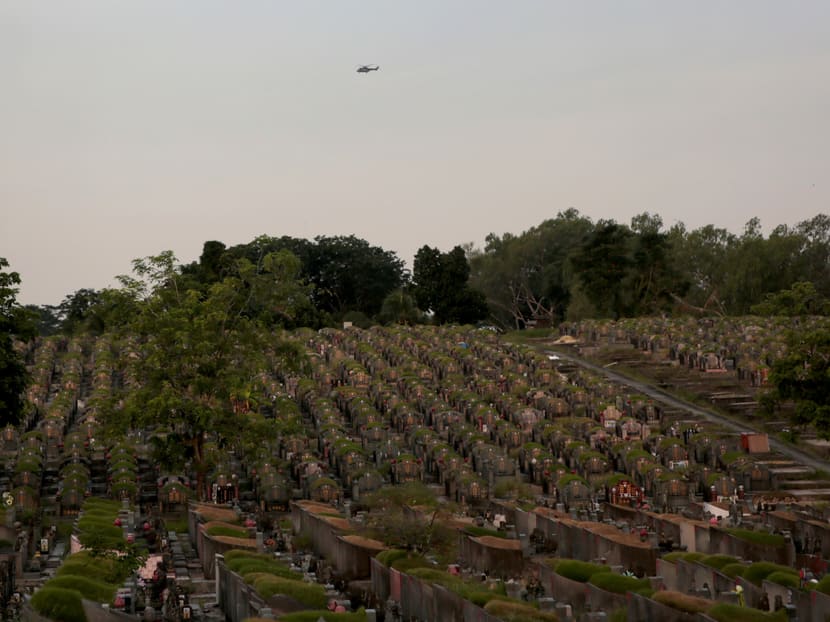
A total of 80,500 Chinese and Muslim graves at Choa Chu Kang Cemetery, which currently occupy 100ha of land, will be exhumed progressively to make way for the expansion of Tengah Air Base. Photos: Jason Quah/TODAY
SINGAPORE — Sitting under a tree with a rusting bike — filled with his trusty grass cutter, a two-litre bottle, cans of paint and a harmonica — Mr Mamat Rasidi recounted how he “built his own business” at the Choa Chu Kang Muslim cemetery.
Almost every day for the past three years, at about 8am, the grave caretaker puts on his sunglasses and high-cut shoes, drapes a towel over his head and starts cycling around the cemetery, looking out for visitors who need help caring for their loved ones’ graves.
Besides de-weeding and grass-cutting, the 63-year-old also helps to wash tombstones and touch up headstones where lettering has faded.
On weekdays, he earns about S$30 a day, tending to up to 10 graves. On weekends, he can earn “hundreds”, “especially on Sundays (when it is) most crowded”.
A total of 80,500 Chinese and Muslim graves at Choa Chu Kang Cemetery, which currently occupy 100ha of land, will be exhumed progressively to make way for the expansion of Tengah Air Base. The first to go will be 5,000 Muslim graves across two blocks in the fourth quarter of next year, followed by 45,000 Chinese graves from the fourth quarter of 2019. The move will see the size of the cemetery shaved by a third.
END OF THE LINE FOR GRAVE CARETAKERS
Mr Mamat is among the handful of grave keepers in the 318-hectare cemetery — the only one here still open for burials since 1993 — who may see their peaceful and idyllic jobs vanish as the graves are exhumed.
It was his desire to be his “own boss” that made him quit his full-time job as a gardener to take up this line of work. “I quite like to work here because it is peaceful, not too difficult,” he said.
On days when “business” is slow, he either belts out his favourite tunes on his harmonica or chats with fellow grave keepers. The cemetery also gives him space to let his creativity run wild.
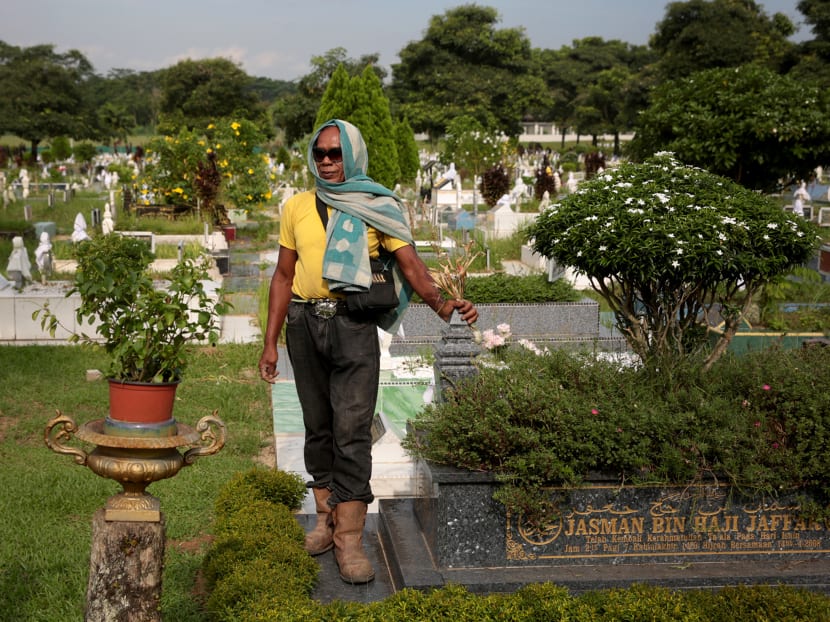
His “favourite corner” — the grave of someone named Jasman Haji Jaffar — is neatly landscaped with shrubs of various colours and pink flowers. An arm’s length away are potted plants propped up on three beams, another of his masterpieces, with pots he had specially bought from the now defunct Sungei Road flea market.
“I am a gardener so I can make it beautiful. Before I (tended to it), it was like (the) others,” said Mr Mamat, who supports his daughter and son-in-law in providing for four grandchildren.
Asked what his plans are once the graves are gone, he said: “Maybe I will go become a busker with my brothers.”

Over at the Chinese cemetery, Mr Huang Ya Jiu tends to two blocks of graves and takes home about S$1,000 a month.
Unlike Mr Mamat, Mr Huang — who is in his 70s — has been in this line for more than 10 years and works for a company which he declined to name.
“It’s not as easy a job as you think. We have to carry heavy loads and the weather can sometimes be quite punishing,” he told TODAY.
He rests under a shelter made out of canvas sheets tied to trees; a black stray dog accompanies him as he does his rounds on foot.
On whether he is concerned that his livelihood could be affected, Mr Huang would only say: “I am ready to retire any way.”
CONCERNED FAMILY MEMBERS
The planned exhumation of the 80,500 graves will be the second-largest in scale in the last two decades, after the removal of 58,000 Christian graves and 68,000 Muslim graves at the Bidadari Cemetery from 2001 to 2006 to make way for housing.
While claims and registration for 50,000 of the graves that will be exhumed first — dated between 1955 and 2000 — will begin only in September, some families have already sought clarifications from the National Environment Agency and the Islamic Religious Council of Singapore (Muis) regarding the process.
Notices for the remaining 500 Chinese graves and 30,000 Muslim graves will be issued at a later date, after they have met the 15-year burial period — a limit set by the Government in November 1998.
Costs of exhumation and cremation at the Choa Chu Kang crematorium (for Chinese graves) will be borne by the Government, but claimants will bear additional costs for performing additional rituals or placing the remains in private cemeteries.
The exhumed Muslim graves will be reinterred into another part of the cemetery in smaller plots, said the authorities.
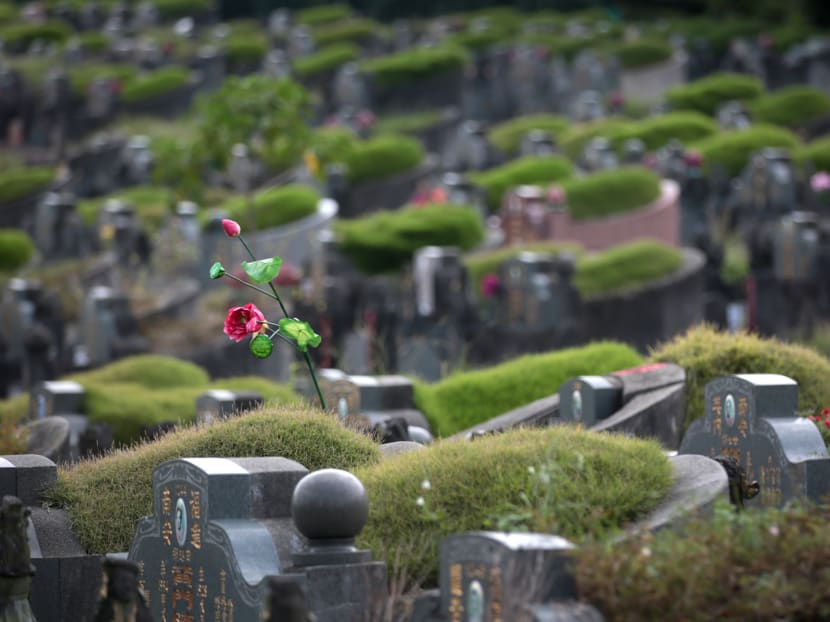
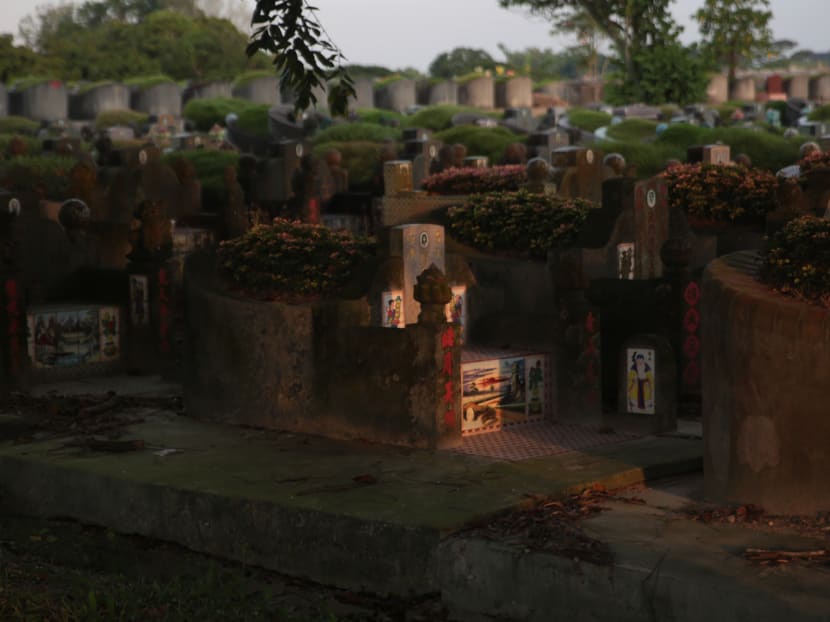
Several families who had dropped by the cemetery office to enquire about claiming procedures told TODAY last Tuesday’s (July 18) announcement was “not unexpected”. In fact, many Chinese families had bought “spots” in columbariums and temples in anticipation of such a day.
Still, some people like cabbie Henry Lye said it is a pity that his father’s grave would have to go. “It is a little sad that we can no longer experience the yearly Qing Ming (tomb sweeping festival) experience.”
The 55-year-old added: “We get up in the wee dawn hours to prepare the offerings, and even though we are often stuck in a bad traffic jam along Lim Chu Kang Road, it is still a big, annual family gathering.”
His father, who died in 1989 at 76, will have his remains transferred to the Kong Meng San Phor Kark See monastery, but the “experience will be very different and more commercialised there”, said Mr Lye. “They have many restrictions … Here, we have more freedom (to perform rituals). I like the atmosphere here.”
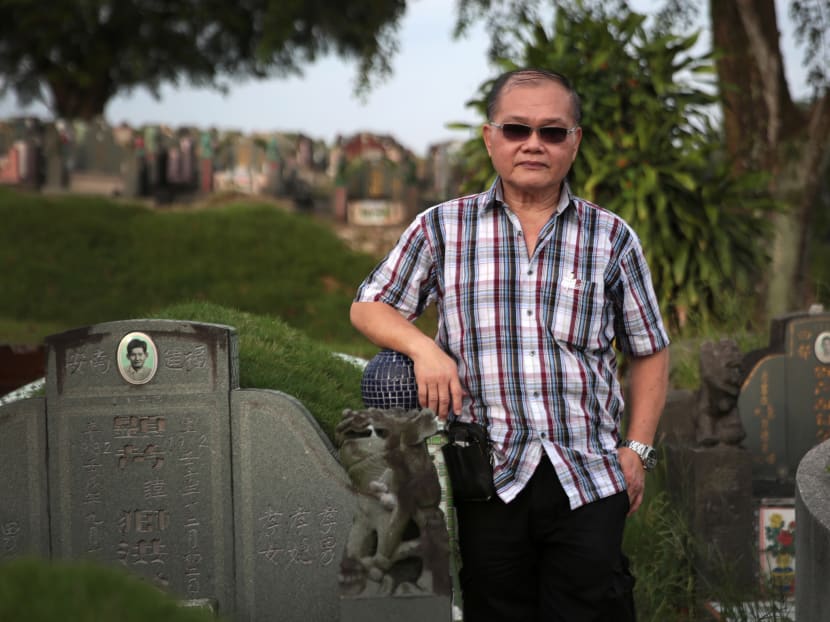
Retiree Hong Qingfu said his family called off plans to restore his father’s grave after the announcement was made. “Since it will soon be gone, we might as well leave it as it is. We have been anticipating such an announcement, expecting this day, so it is not a shock to us,” said the 63-year-old.
Some members of the Muslim community, however, are concerned whether future land uses could accommodate their need to bury their dead. Islamic laws prohibit cremation.
Ms Haslinda Putri Harun, the daughter of former Member of Parliament Harun Ghani, wrote in a comment on Facebook: “The lack of empathy is hardly surprising anymore. Makes me wonder about my own ‘resting place’, if ever there is any space left.”
Harun, who died aged 66 in August 2005, was also formerly a political secretary to the Home Affairs Ministry. He was known for leading the charge in the war against drugs in the Malay community.
His grave is among the 30,000 Muslim graves that will be exhumed at a later date, after they reach the 15-year burial limit.
Urging the authorities to reach out directly to the family members of the those whose graves will be affected, based on addresses in burial records, Ms Haslinda told TODAY: “I have many questions, like where are they going to put him? And will we be moved again?
“Because land is going to get more scarce ... (My daughter) is concerned if there is going to be enough space for all of us (to be buried after we die).”
Mr Alim Mohamed, whose late mother’s grave is also slated for exhumation, said:“I am upset ... You can’t change the religious laws of each community. There has to come a point where graves can no longer be re-interred.”
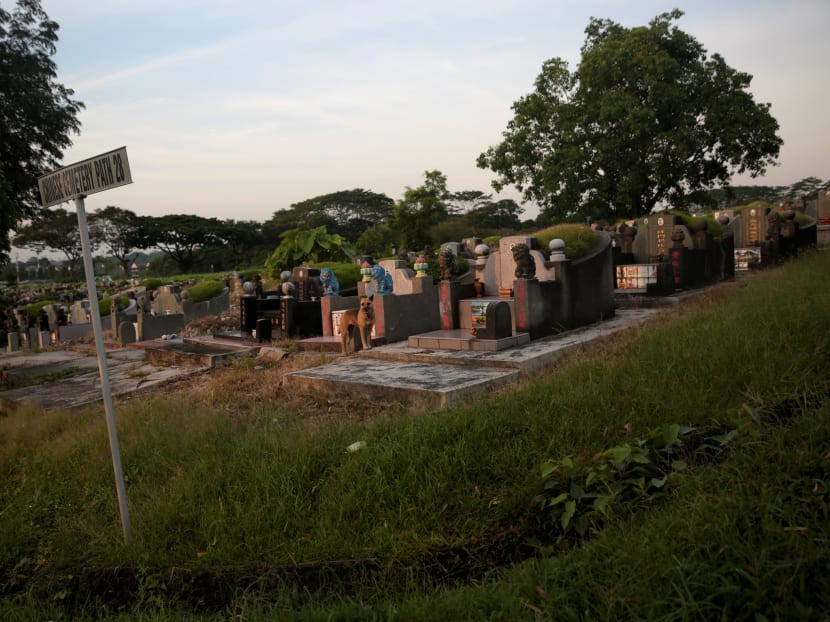
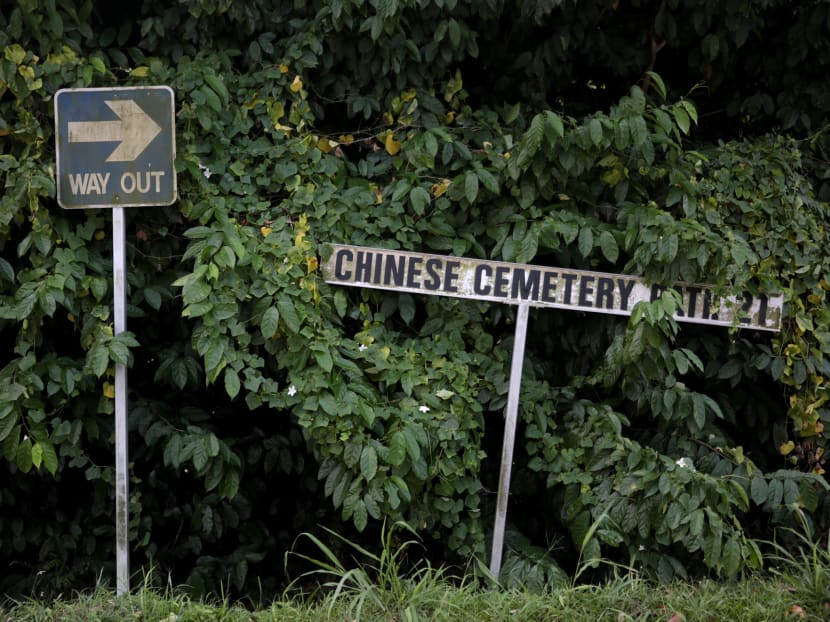
CEMETERY FOR ALL
Opened in 1947, Choa Chu Kang cemetery is the only one left here where burials are still allowed. Apart from the Muslims, burial is also compulsory for Jews, Parsis and people of the Bahai faith.
It was “designed for all religious sects” according to reports in the 1940s, and has areas demarcated for Roman Catholics, Protestants, Muslims, Ahmadiyya Muslims, the Bahai, as well as Chinese of other faiths.
Exhumation first began here in 2004.
A new interment system for Muslims was first introduced here in 2007, where concrete underground crypts replace the conventional earth plots to save space and allow bodies to be arranged in a more compact manner, with graves only 15cm apart and separated by thin concrete slabs.
The system — which has also been introduced for Christian and Chinese interments — is meant to keep the grounds operational until at least 2130, some 85 years more than the old system of spacing the graves 45cm apart, the NEA had said.
Among the graves slated for exhumation are prominent individuals such as football icon Dollah Kassim and Siput Sarawak, the late mother of singing sensation Anita Sarawak.






